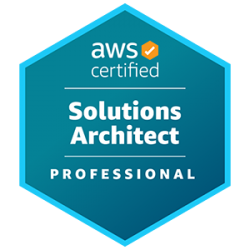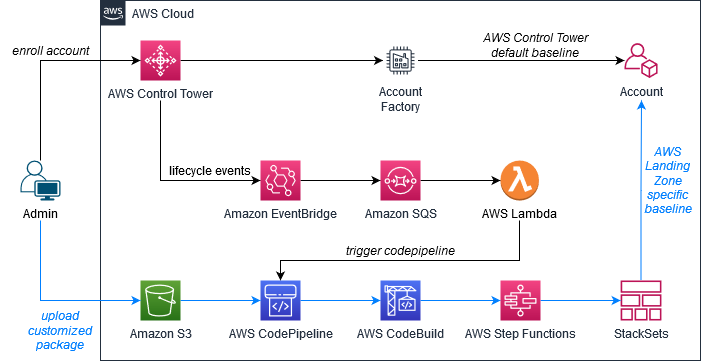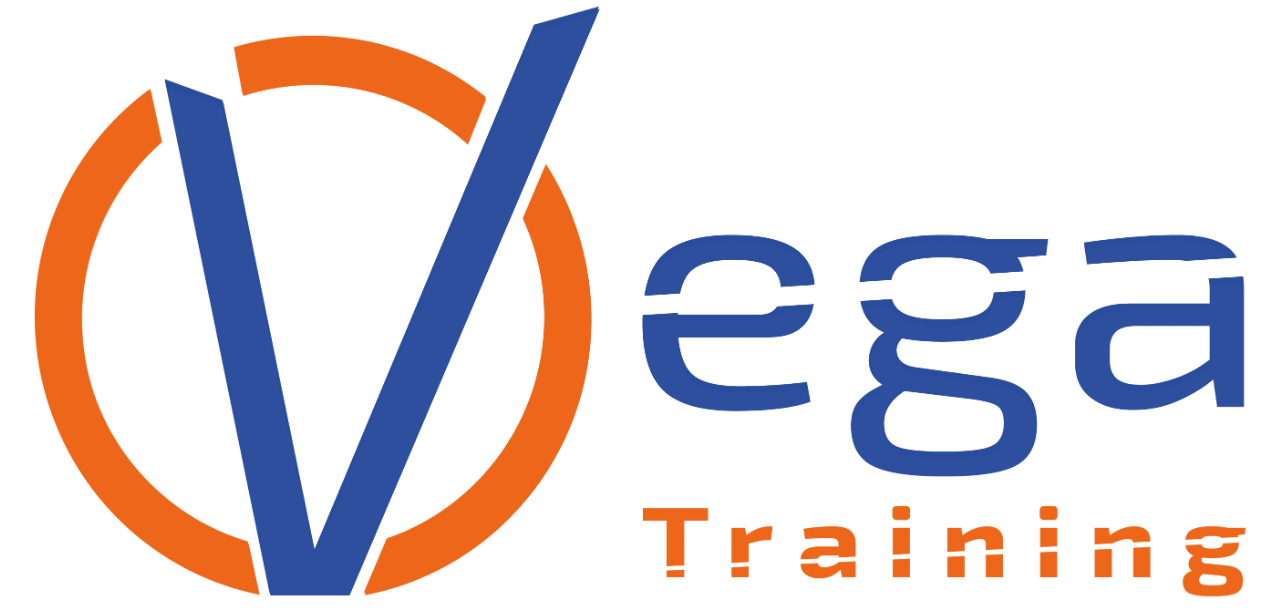Obiettivi | Certificazione | Contenuti | Tipologia | Prerequisiti | Durata e Frequenza | Docenti | Modalità di Iscrizione | Calendario

Il Corso Advanced Architecting on AWS (ADVARC) è progettato per i partecipanti che hanno già una solida conoscenza di AWS e desiderano approfondire le loro competenze nell’architettura di soluzioni complesse su AWS. Durante il corso, i partecipanti impareranno a progettare e implementare soluzioni scalabili, affidabili e sicure su AWS, utilizzando i servizi più avanzati offerti dalla piattaforma AWS. Il corso copre argomenti come la progettazione di architetture serverless, la distribuzione di applicazioni, l’integrazione di servizi di elaborazione dei dati, la sicurezza e la conformità, la migrazione di carichi di lavoro e molto altro ancora. Alla fine del corso, i partecipanti saranno in grado di progettare e implementare soluzioni cloud altamente scalabili e disponibili su AWS. Il corso contribuisce alla preparazione della Certificazione AWS Certified Solutions Architect – Professional.
Contattaci ora per ricevere tutti i dettagli e per richiedere, senza alcun impegno, di parlare direttamente con uno dei nostri Docenti (Clicca qui)
oppure chiamaci subito al nostro Numero Verde (800-177596)
Obiettivi del corso
Di seguito una sintesi degli obiettivi principali del Corso Advanced Architecting on AWS (ADVARC):
- Progettare e Implementare Soluzioni Scalabili e Sicure: Apprendere come sviluppare soluzioni che siano allo stesso tempo scalabili, affidabili e sicure utilizzando i servizi avanzati di AWS.
- Architetture Serverless: Acquisire competenze nella progettazione di architetture serverless e comprendere come queste possano essere implementate in modo efficace su AWS.
- Distribuzione di Applicazioni: Studiare le metodologie e gli strumenti per una distribuzione efficace delle applicazioni su AWS, assicurando performance e affidabilità.
- Integrazione di Servizi di Elaborazione Dati: Imparare a integrare vari servizi di elaborazione dati e comprendere come questi possano essere utilizzati per migliorare e ottimizzare le soluzioni cloud.
- Sicurezza, Conformità e Migrazione di Carichi di Lavoro: Coprire aspetti relativi alla sicurezza e alla conformità delle soluzioni AWS, oltre a esplorare strategie e tecniche per la migrazione di carichi di lavoro su AWS.
Certificazione del corso
Esame AWS Certified Solutions Architect – Professional;
L’esame di certificazione AWS Certified Solutions Architect – Professional (SAP-C02) è progettato per valutare le competenze avanzate dei candidati nella progettazione, implementazione e gestione di soluzioni su AWS. L’esame copre tematiche come l’architettura di soluzioni complesse, l’integrazione di servizi AWS e di terze parti, la gestione del networking, la sicurezza e l’ottimizzazione dei costi.
L’obiettivo è garantire che i candidati abbiano una conoscenza approfondita delle best practice e delle soluzioni avanzate AWS per risolvere problemi complessi e specifici. Durante l’esame, i candidati affronteranno argomenti quali la migrazione di applicazioni esistenti, l’adozione di strategie di continuità operativa e disaster recovery, e la gestione dell’architettura di rete a livello avanzato.
Contenuti del corso
Module 1: Reviewing Architecting Concepts
- Group Exercise: Review Architecting on AWS core best practices
- Lab 1: Securing Amazon S3 VPC Endpoint Communications
Module 2: Single to Multiple Accounts
- AWS Organizations for multi-account access and permissions
- AWS SSO to simplify access and authentication across AWS accounts and third-party services
- AWS Control Tower
- Permissions, access, and authentication
Module 3: Hybrid Connectivity
- AWS Client VPN authentication and control
- AWS Site-to-Site VPN
- AWS Direct Connect for hybrid public and private connections
- Increasing bandwidth and reducing cost
- Basic, high, and maximum resiliency
- Amazon Route 53 Resolver DNS resolution
Module 4: Specialized Infrastructure
- AWS Storage Gateway solutions
- On-demand VMware Cloud on AWS
- Extending cloud infrastructure services with AWS Outposts
- AWS Local Zones for latency-sensitive workloads
- Your 5G network with and without AWS Wavelength
Module 5: Connecting Networks
- Simplifying private subnet connections
- VPC isolation with a shared services VPC
- Transit Gateway Network Manager and VPC Reachability Analyzer
- AWS Resource Access Manager
- AWS PrivateLink and endpoint services
- Lab 2: Configuring Transit Gateways
Module 6: Containers
- Container solutions compared to virtual machines
- Docker benefits, components, solutions architecture, and versioning
- Container hosting on AWS to reduce cost
- Managed container services: Amazon Elastic Container Service (Amazon ECS) and Amazon
- Elastic Kubernetes Service (Amazon EKS)
- AWS Fargate
- Lab 3: Deploying an Application with Amazon EKS on Fargate
Module 7: Continuous Integration/Continuous Delivery (CI/CD)
- CI/CD solutions and impact
- CI/CD automation with AWS CodePipeline
- Deployment models
- AWS CloudFormation StackSets to improve deployment management
Module 8: High Availability and DDoS Protection
- Common DDoS attacks layers
- AWS WAF
- AWS WAF web access control lists (ACLs), real-time metrics, logs, and security automation
- AWS Shield Advanced services and AWS DDoS Response Team (DRT) services
- AWS Network Firewall and AWS Firewall Manager to protect accounts at scale
Module 9: Securing Data
- What cryptography is, why you would use it, and how to use it
- AWS KMS
- AWS CloudHSM architecture
- FIPS 140-2 Level 2 and Level 3 encryption
- Secrets Manager
Module 10: Large-Scale Data Stores
- Amazon S3 data storage management including storage class, inventory, metrics, and policies
- Data lake vs. data warehouse: Differences, benefits, and examples
- AWS Lake Formation solutions, security, and control
- Lab 4: Setting Up a Data Lake with Lake Formation
Module 11: Large-Scale Applications
- What edge services are and why you would use them
- Improve performance and mitigate risk with Amazon CloudFront
- Lambda@Edge
- AWS Global Accelerator: IP addresses, intelligent traffic distribution, and health checks
- Lab 5: Migrating an On-Premises NFS Share Using AWS DataSync and Storage Gateway
Module 12: Optimizing Cost
- On-premises and cloud acquisition/deprecation cycles
- Cloud cost management tools including reporting, control, and tagging
- Examples and analysis of the five pillars of cost optimization
Module 13: Migrating Workloads
- Business drivers and the process for migration
- Successful customer practices
- The 7 Rs to migrate and modernize
- Migration tools and services from AWS
- Migrating databases and large data stores
- AWS Schema Conversion Tool (AWS SCT)
Module 14: Capstone Project
- Use the Online Course Supplement (OCS) to review use cases, investigate data, and answer
- architecting design questions about Transit Gateway, hybrid connectivity, migration, and cost
- optimization
Tipologia
Corso di Formazione con Docente
Docenti
I docenti sono Istruttori accreditati Amazon AWS e certificati in altre tecnologie IT, con anni di esperienza pratica nel settore e nella Formazione.
Infrastruttura laboratoriale
Per tutte le tipologie di erogazione, il Corsista può accedere alle attrezzature e ai sistemi presenti nei Nostri laboratori o direttamente presso i data center del Vendor o dei suoi provider autorizzati in modalità remota h24. Ogni partecipante dispone di un accesso per implementare le varie configurazioni avendo così un riscontro pratico e immediato della teoria affrontata. Ecco di seguito alcuni scenari tratti dalle attività laboratoriali:

Dettagli del corso
Prerequisiti
Si consiglia la partecipazione al Corso Architecting on AWS.
Durata del corso
Durata Intensiva 3gg.
Frequenza
Varie tipologie di Frequenza Estensiva ed Intensiva.
Date del corso
- Advanced Architecting on AWS (Formula Intensiva) – 03/06/2024 – 09:00 – 17:00
- Advanced Architecting on AWS (Formula Intensiva) – 02/09/2024 – 09:00 – 17:00
- Advanced Architecting on AWS (Formula Intensiva) – 25/11/2024 – 09:00 – 17:00
Modalità di iscrizione
Le iscrizioni sono a numero chiuso per garantire ai tutti i partecipanti un servizio eccellente. L’iscrizione avviene richiedendo di essere contattati dal seguente Link, o contattando la sede al numero verde 800-177596 o inviando una richiesta all’email [email protected].


